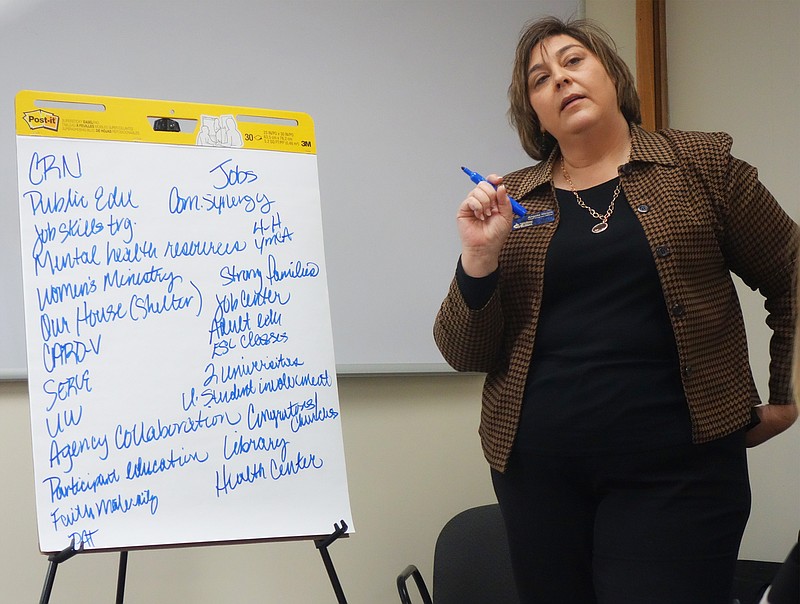According to local leaders, Callaway County is a place with many needs, many services to address those needs and a need for more education about those services.
In the training room at the Callaway Chamber of Commerce, about 40 people - teachers, government officials, representatives from charitable organizations, churches and more - gathered last week to brainstorm how Central Missouri Community Action can better serve Callaway County.
"If we're all doing better, the community is doing better," said Angela Hirsch, chief programs officer at CMCA.
She facilitated the discussion Friday afternoon at the chamber offices. CMCA also will host Community Conversations in each of the seven other counties it serves. The conversation series takes place every three years and coincides with the broader distribution of a Community Needs Assessment survey.
"It will be used to help CMCA identify our priorities for the next three years," Hirsch said.
The format was simple. Hirsch posed a series of questions and attendees listed off answers, which Hirsch jotted down on a giant sticky note pad.
The first question: What factors and needs contribute most to poverty in Callaway County?
Hirsch said that while the unemployment rate in Callaway County is a modest 4 percent, some 14.2 percent of Callawegians live below the federal poverty line, currently set at $24,800 for a family of four. (In November, the state Department of Labor reported a 3.2 percent unemployment rate in Callaway County, as reported in the Jan. 1 Fulton Sun.)
What's more, Hirsch said the current minimum wage in Missouri is only about half of what's been calculated as the living wage here, $13.31 per hour for a single-income family of four.
"The fact that we have the phrase 'working poor' is kind of ironic," Hirsch said.
Cara Page, institutional activities coordinator with the Missouri Department of Corrections, pointed out that many local jobs - for example, with the Dollar General distribution center - are off-limits for those with felonies on their records.
"Eighty-five percent of our prison population is related to drugs," Page said. "They can't get a job with a felony."
Attendees also pointed to the difficulty of finding affordable, good-quality housing, especially rentals.
County Commissioner Roger Fischer said he might know part of the reason for that. He said local developers struggle to compete with the low housing prices offered at partially subsidized developments here, such as at Callaway Village.
All agreed that part of the reason was a lack of knowledge about the many programs and organizations offering help to struggling people in Callaway County.
The second question: What opportunities does Callaway County already offer, and how to they address those community problems?
Kim Barnes, president and CEO of the Callaway Bank, pointed towards a general community-mindedness.
"We have a lot of businesses and organizations that are socially conscious," she said.
Callaway County has many local charities and organizations willing to lend a helping hand, from adult education classes to SERVE buses, and through the Community Resource Network, many are in contact with each other.
"We all work together," said Brittany Abbott, outreach director at SERVE. "All the agencies are good at referring to each other and playing to our strengths."
The final question: What can CMCA do to address those needs?
Most of those present agreed that the best thing CMCA could do is be a touch-point for those many different opportunities, and help spread the word they exist. That includes pushing services like 211, the phone line maintained by United Way which helps connect people with resources.
In the past, topics brainstormed at the Community Conversations have turned into real, helpful action, said Lorna Cockrum, outreach director at Community Health Center of Central Missouri.
"It makes me so happy to not hear people saying dental hygiene is the county's greatest need," she said.
According to Cockrum, dental health was a big topic three years ago. The health center ended up establishing a mobile dental health center to visit schools.
"We've screened and put fluoride on the teeth of 3,500 kids," Cockrum said.

